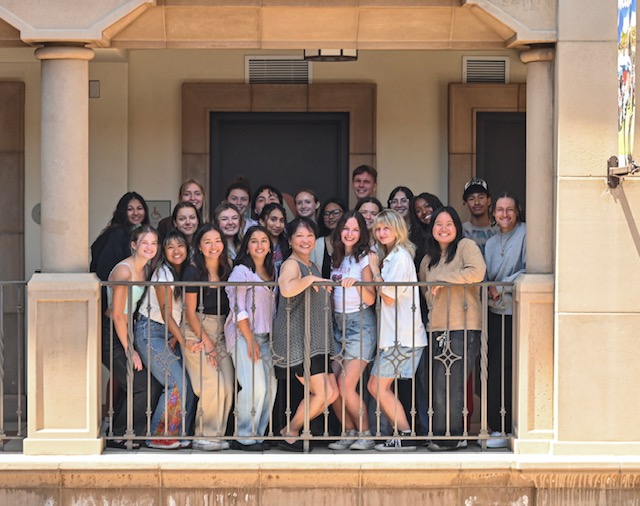The dangers of performative activism on social media
LILY ANDERSON / ASST. OPINION EDITOR
In a world that is intensely connected through social media and fueled by the constant need to share opinions, activism can sometimes be more about approval seeking instead of real change. This phenomenon is known as “performative activism,” where individuals or organizations engage in shallow, superficial acts of support for various causes to appear socially aware to the people around them. However, this flashy facade can be highly damaging to the causes it claims to support, leaving it ineffective in pursuing meaningful change.
Performative activism is making a statement without following through with meaningful action. It typically involves sharing a hashtag on social media, reposting someone else’s post or attending an event just so you can say you went. True activism involves persistent efforts to address systemic and deeply-rooted issues, whereas performative activism merely scratches the surface, providing no real helpful solutions or progress. Over the past few weeks, I have noticed many examples of performative activism surrounding the Israel-Palestine conflict. People I know have reposted content without actually knowing what’s going on or acted like strong supporters virtually while avoiding taking action in real life. This has made me feel frustrated and has also made me recognize times this has happened in the past.
The “Blackout Tuesday” campaign that swept through Instagram in 2020 is an infamous example of performative activism. Following the unlawful death of George Floyd, many individuals and corporations posted black squares on their Instagram feeds as a sign of solidarity with the Black Lives Matter movement. While the intent may have been to raise awareness, the oversaturation of black squares drowned out crucial information and resources circulating around the same time, inadvertently harming the cause it aimed to support.
Another example of performative activism can be found in the commercialization of Pride Month. Many corporations plaster their logos with rainbow colors and slogans to capitalize on the LGBTQ+ community’s support. While some companies genuinely contribute to LGBTQ+ causes, others merely use this month as an opportunity to appear inclusive, without substantively supporting the community. Instead, companies have turned Pride Month into a way to profit.
This occurrence was clearly seen earlier this year when Bud Light partnered with Dylan Mulvaney, an influencer who is transgender. Bud Light received backlash for this partnership and ended up dropping it, proving that they were only using Mulvaney as a way to try and seem supportive of the LGBTQ+ community, and disregarded this the second it negatively impacted the company.
However, it’s essential to recognize that not all forms of performative activism are automatically devoid of any benefit. Sometimes, performative acts can serve as a genuine attempt to bring about change by raising awareness about an issue. For instance, posting a hashtag or sharing a post about a crisis can prompt essential conversations and encourage people to take further action.
Before you become involved online, make sure that you are aware of the full context of the situation so you are not spreading incorrect information, and look to repost content or share hashtags that have been provided by reputable sources. Nonetheless, the key is ensuring these acts are a stepping stone to real, impactful change rather than a final destination.
As the Israel-Palestine conflict unfolds, it is crucial to approach the topic with sensitivity. Engaging in performative activism in this context can be extraordinarily damaging and polarizing. To avoid this, it is essential to educate oneself about the situation’s complexities, engage in open dialogue and support organizations that promote peace and justice in the region. If you are consuming news, make sure that you are acknowledging varying perspectives and avoiding biased sources. The best thing you can do right now is become more aware, take time to think and reflect, and be supportive of those around you who are most impacted by this situation.
I have reflected and noticed that I have engaged in performative activism in the past by sharing posts and not actually doing anything further. This was due to a lack of information about what it is and its dangers. If you have also done so, this doesn’t make you a bad person or a poor supporter. Recognizing mistakes you have made in the past is a great way to improve your own activism moving forward.
While performative activism may sometimes raise awareness, it falls short of creating the transformation we desperately need in our world. To genuinely support causes moving forward, we must collectively end shallow gestures and commit to long-term, effective action.
Stay engaged in your community, research topics you are passionate about and look for physical ways to get involved or help. Research the charities you choose to support to make sure their resource allocation follows its claims. Search for local volunteering opportunities. Consume news from a diverse range of sources and people. Become an ally and supporter in real life, not just on your Instagram stories.




Leave a comment